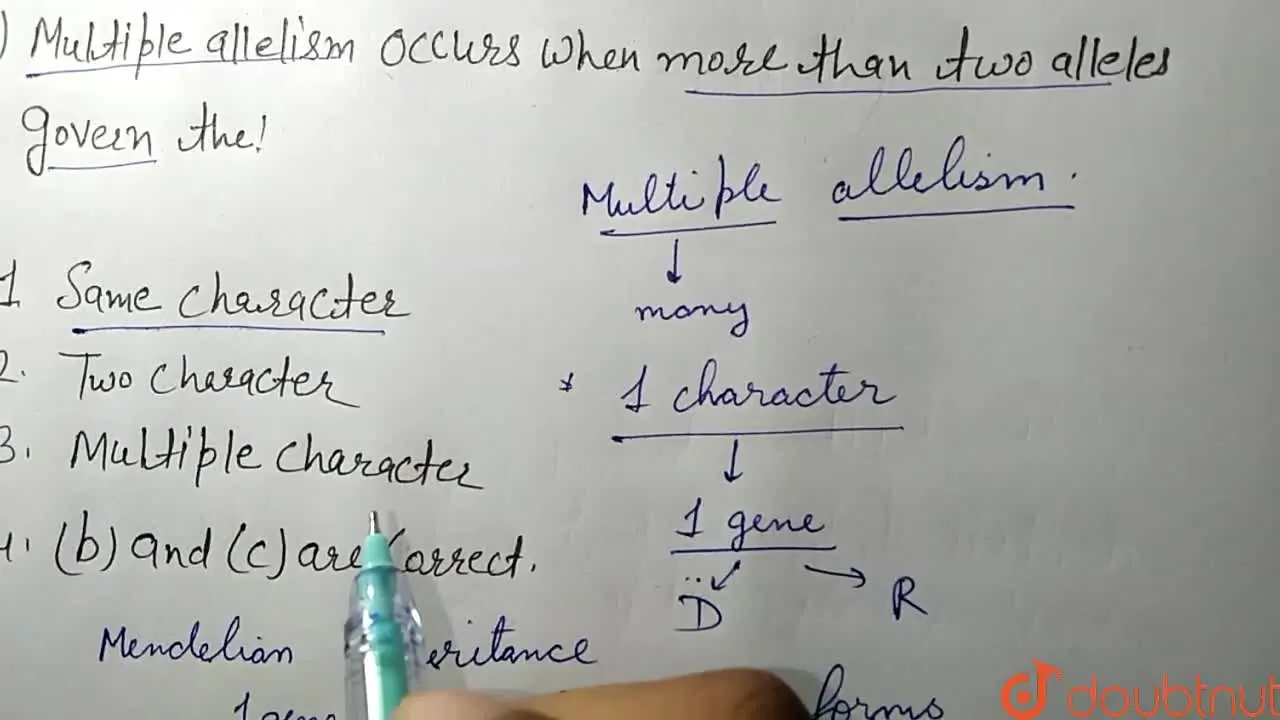Multiple allelism occurs when more than two alleles govern the:
A
Same character
B
Two characters
C
Multiple characters
D
(b) and (c) are correct.
Video Solution
|
Answer
Step by step video & image solution for Multiple allelism occurs when more than two alleles govern the: by Biology experts to help you in doubts & scoring excellent marks in Class 12 exams.
Updated on:21/07/2023
Related Playlists
- BOOK - EDUCART PUBLICATIONCHAPTER - SAMPLE PAPER 10EXERCISE - SECTION-C10videos
SAMPLE PAPER 10
- BOOK - EDUCART PUBLICATIONCHAPTER - SAMPLE PAPER 10EXERCISE - SECTION-C10videos
SAMPLE PAPER 10
- BOOK - EDUCART PUBLICATIONCHAPTER - SAMPLE PAPER 1 EXERCISE - SECTION-C12videos
SAMPLE PAPER 1
- BOOK - EDUCART PUBLICATIONCHAPTER - SAMPLE PAPER 2 EXERCISE - SECTION-C12videos
SAMPLE PAPER 2
Similar Questions
Multiple alleles :-
View SolutionMultiple allelism is observed in
View SolutionMultiple alleles are present:
View SolutionMultiple alleles are present:
View SolutionMultiple alleles are present
View SolutionMultiple alleles are present
View SolutionMultiple alleles are present
View SolutionMultiple allelism is observed in:
View SolutionAllele is
View SolutionMultiple alleles control the inheritance of
View Solution


